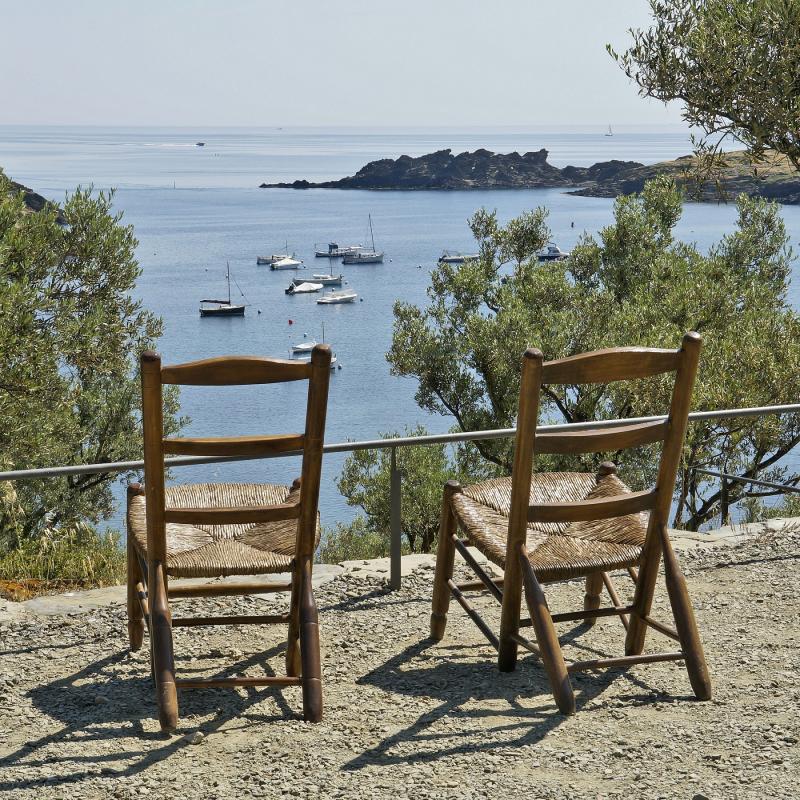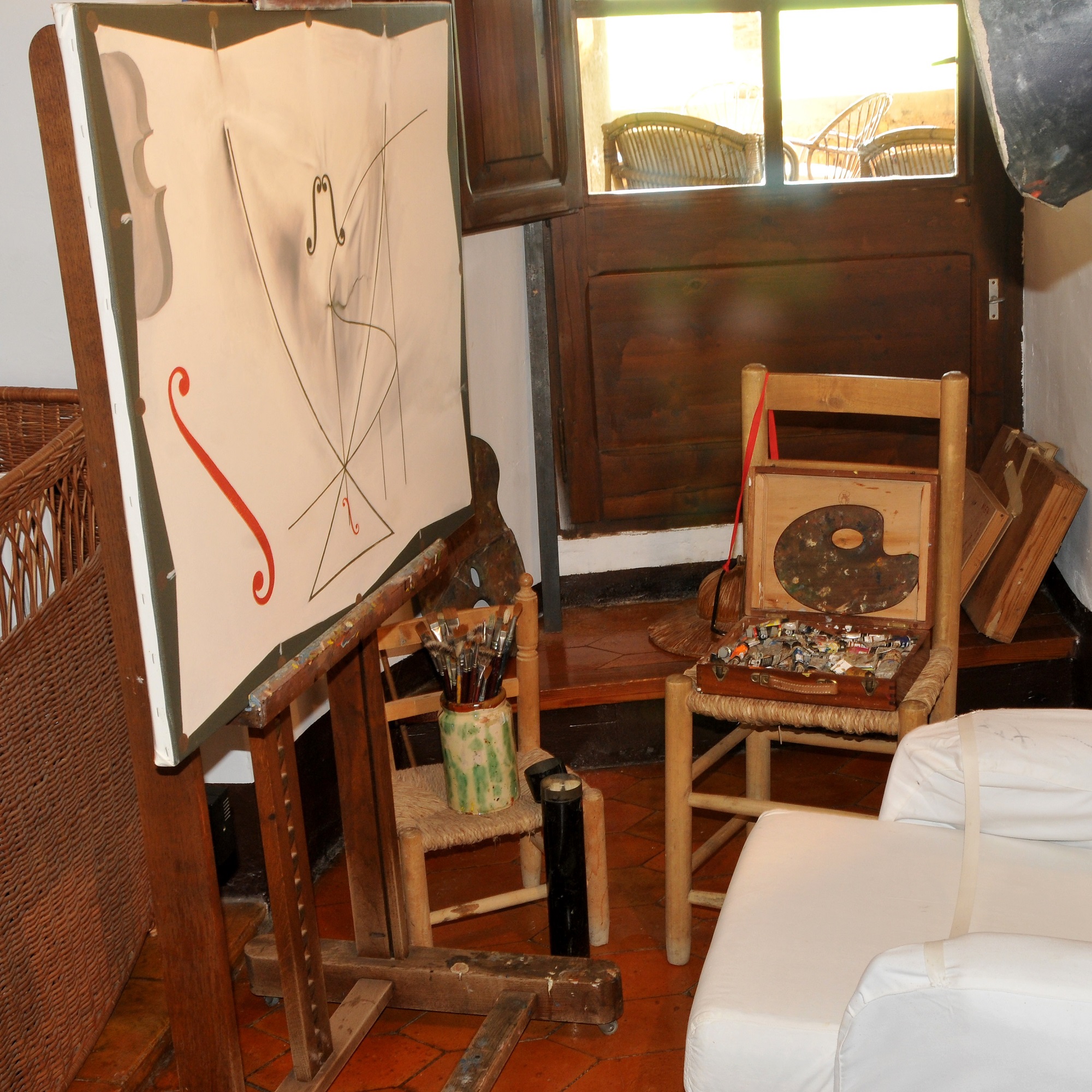Dalí Theatre-Museum, Figueres, virtual tour review - tantalising but unsatisfactory | reviews, news & interviews
Dalí Theatre-Museum, Figueres, virtual tour review - tantalising but unsatisfactory
Dalí Theatre-Museum, Figueres, virtual tour review - tantalising but unsatisfactory
The magic of Dalí's private world is lost in its virtual form

Salvador Dalí’s house at Portlligat on the Costa Brava is straight out of the pages of a lifestyle magazine, its sunbaked white walls dazzling in the sunshine, and light pouring in from every angle.
The house is one point of the Dalí Triangle: another is the Gala Dalí Castle at Púbol, not far from Girona (pictured below right). Dalí moved here after the death of his wife in 1982; in her lifetime it was her domain “where she could reign like an absolute sovereign” and in death it became her mausoleum. The final point in this Catalan tour is the Theatre-Museum at Figueres, home to the largest and most diverse collection of works by Dalí, and with its red walls and roof-topping giant eggs, a striking addition to the skyline since its inauguration in 1974.
 It was the house at Portlligat that I wanted to visit, and though a virtual walk was advertised it is actually the Theatre-Museum at Figueres that you can visit online, though a rudimentary 3D experience of both Portlligat and Púbol is available via the Salvador Dalí website. The surrealist artist was born at Figueres, and the theatre, destroyed during the Spanish Civil War, was a part of his childhood landscape, and the location of one of his earliest exhibitions. The rebuilding of the theatre began in 1960, in response to a request from the mayor, who asked Dalí to donate one of his artworks to the town. Characteristically, Dalí pledged a museum, saying: “Where, if not in my own town, should the most extravagant and solid of my work endure, where if not here?”
It was the house at Portlligat that I wanted to visit, and though a virtual walk was advertised it is actually the Theatre-Museum at Figueres that you can visit online, though a rudimentary 3D experience of both Portlligat and Púbol is available via the Salvador Dalí website. The surrealist artist was born at Figueres, and the theatre, destroyed during the Spanish Civil War, was a part of his childhood landscape, and the location of one of his earliest exhibitions. The rebuilding of the theatre began in 1960, in response to a request from the mayor, who asked Dalí to donate one of his artworks to the town. Characteristically, Dalí pledged a museum, saying: “Where, if not in my own town, should the most extravagant and solid of my work endure, where if not here?”
Crowned with a great glass cupola, the theatre itself forms the heart of the building, a massive, light-filled space dominated by the backdrop designed by Dalí for the the ballet Labyrinth, which premiered in New York in 1941.
Like many virtual tours, this one tends to lurch about drunkenly, and a heavy mouse-finger will leave you gazing disoriented at a ceiling, or nose to nose with a no exit sign. Randomly clicking on rooms unaided by an audio guide leaves you hopelessly underinformed, but you’ll occasionally stumble on something astonishing and often famous, like the painted ceiling in the Palace of the Wind, or the sofa in the Mae West room, modelled on the film star’s lips. Dalí wanted the museum to be a journey into his world, and the abiding feeling is of the pull of the real thing.
- Take the tour of the Dalí Theatre-Museum
- Salvador Dalí website
- Read more Visual Arts reviews on theartsdesk
rating
Explore topics
Share this article
The future of Arts Journalism
You can stop theartsdesk.com closing!
We urgently need financing to survive. Our fundraising drive has thus far raised £49,000 but we need to reach £100,000 or we will be forced to close. Please contribute here: https://gofund.me/c3f6033d
And if you can forward this information to anyone who might assist, we’d be grateful.

Subscribe to theartsdesk.com
Thank you for continuing to read our work on theartsdesk.com. For unlimited access to every article in its entirety, including our archive of more than 15,000 pieces, we're asking for £5 per month or £40 per year. We feel it's a very good deal, and hope you do too.
To take a subscription now simply click here.
And if you're looking for that extra gift for a friend or family member, why not treat them to a theartsdesk.com gift subscription?
more Visual arts
 'We are bowled over!' Thank you for your messages of love and support
Much-appreciated words of commendation from readers and the cultural community
'We are bowled over!' Thank you for your messages of love and support
Much-appreciated words of commendation from readers and the cultural community
 Folkestone Triennial 2025 - landscape, seascape, art lovers' escape
Locally rooted festival brings home many but not all global concerns
Folkestone Triennial 2025 - landscape, seascape, art lovers' escape
Locally rooted festival brings home many but not all global concerns
 Sir Brian Clarke (1953-2025) - a personal tribute
Remembering an artist with a gift for the transcendent
Sir Brian Clarke (1953-2025) - a personal tribute
Remembering an artist with a gift for the transcendent
 Emily Kam Kngwarray, Tate Modern review - glimpses of another world
Pictures that are an affirmation of belonging
Emily Kam Kngwarray, Tate Modern review - glimpses of another world
Pictures that are an affirmation of belonging
 Kiefer / Van Gogh, Royal Academy review - a pairing of opposites
Small scale intensity meets large scale melodrama
Kiefer / Van Gogh, Royal Academy review - a pairing of opposites
Small scale intensity meets large scale melodrama
 Jenny Saville: The Anatomy of Painting, National Portrait Gallery review - a protégé losing her way
A brilliant painter in search of a worthwhile subject
Jenny Saville: The Anatomy of Painting, National Portrait Gallery review - a protégé losing her way
A brilliant painter in search of a worthwhile subject
 Abstract Erotic, Courtauld Gallery review - sculpture that is sensuous, funny and subversive
Testing the boundaries of good taste, and winning
Abstract Erotic, Courtauld Gallery review - sculpture that is sensuous, funny and subversive
Testing the boundaries of good taste, and winning
 Edward Burra, Tate Britain review - watercolour made mainstream
Social satire with a nasty bite
Edward Burra, Tate Britain review - watercolour made mainstream
Social satire with a nasty bite
 Ithell Colquhoun, Tate Britain review - revelations of a weird and wonderful world
Emanations from the unconscious
Ithell Colquhoun, Tate Britain review - revelations of a weird and wonderful world
Emanations from the unconscious
 Rachel Jones: Gated Canyons, Dulwich Picture Gallery review - teeth with a real bite
Mouths have never looked so good
Rachel Jones: Gated Canyons, Dulwich Picture Gallery review - teeth with a real bite
Mouths have never looked so good
 Yoshitomo Nara, Hayward Gallery review - sickeningly cute kids
How to make millions out of kitsch
Yoshitomo Nara, Hayward Gallery review - sickeningly cute kids
How to make millions out of kitsch
 Hamad Butt: Apprehensions, Whitechapel Gallery review - cool, calm and potentially lethal
The YBA who didn’t have time to become a household name
Hamad Butt: Apprehensions, Whitechapel Gallery review - cool, calm and potentially lethal
The YBA who didn’t have time to become a household name

Add comment